ProView – Julbo Edge Cover Sunglasses Review
Julbo has been making intention-built high mountain glasses for more than 130 years, and the Edge Cover REACTIV is on the edge of their constant innovation. While the Edge was originally designed for biking, it’s become a favorite for skiers as well, and the Edge Cover is the next best version. They’ve been updated with a darker photochromic lens and removable shields for long days in bright conditions. Spring in the Sierra was the perfect place to test these updates and put them up to par with other glacier glasses.
Julbo Edge Cover Sunglasses
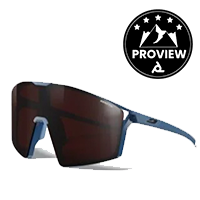
Product Name: Julbo Edge Cover Sunglasses
Product Description: We’ve equipped our EDGE sunglasses with a series of accessories to make it THE ultimate mountain eyewear, giving birth to the EDGE COVER. Equipped with a nose guard and removable side shells, it protects against cold, wind and sun, providing resolutely technical support for mountain enthusiasts. With its bold style, EDGE COVER embodies a new era for mountain and mountaineering eyewear.
Offer price: MSRP: $200.00 - $300.00
-
Quality
(5)
-
Features
(5)
-
Fit
(5)
-
Durability
(4)
-
Versitility
(5)
Summary
The Edge Cover paired with the 0-4 REACTIV lens is a do-it-all pair of shades for high mountain travel to apres ski and everything in between. For those seeking the best protection, no matter the day, there’s no better option.
Overall
4.8Pros
- Highly modular with removable nose and side shields
- Dark enough for prolonged glacier travel
- Great ventilation and wind protection
Cons
-
Nose and side shields can be finicky
Truth be told, I had a pair of the Edge with the 0-3 lens and loved them. I used them for mountain biking and ski touring, but I would often be seen using them around town as well. Historically, spring was the time for the Julbo Explorer 2.0 to take the place of lighter shades, but this year, with the new 0-4 lens, the Edge Cover has been my daily driver thanks to the increased protection.


Look/Style
The Edge Cover is a full-frame style with a magnetic connection for the lens on the bridge of the nose; the temple arms are semi-rigid, becoming softer rubber halfway down. The temple arms are thin and comfortable in a helmet. The frame is on the larger side, but doesn’t seem out of place on a slightly smaller head, and the nose is moldable so that it can be adjusted for fit and distance. The magnetic attachment snaps into place and feels quite secure. While big, goggle-like glasses aren’t usually for me, I liked the look, though I care more about performance.
Versatility
The Edge Cover should be sought after most for its versatility. The REACTIV lens has a huge range, which means they could be worn for alpine starts or during bad weather for protection against wind and snow. The side shields aid in this protection and have mostly stayed on my pair as I haven’t found a downside to having them installed. The side shields do cover some of the vents, so I may remove them for mountain biking once temperatures rise, but I haven’t had any fogging yet. The nose shield might look dorky, but it outperforms face shields that sit on the skin, as the nose shield maintains airflow while blocking the sun. The nose shield also closes the gap between the bottom of the frame and the lens, further increasing the sun protection.
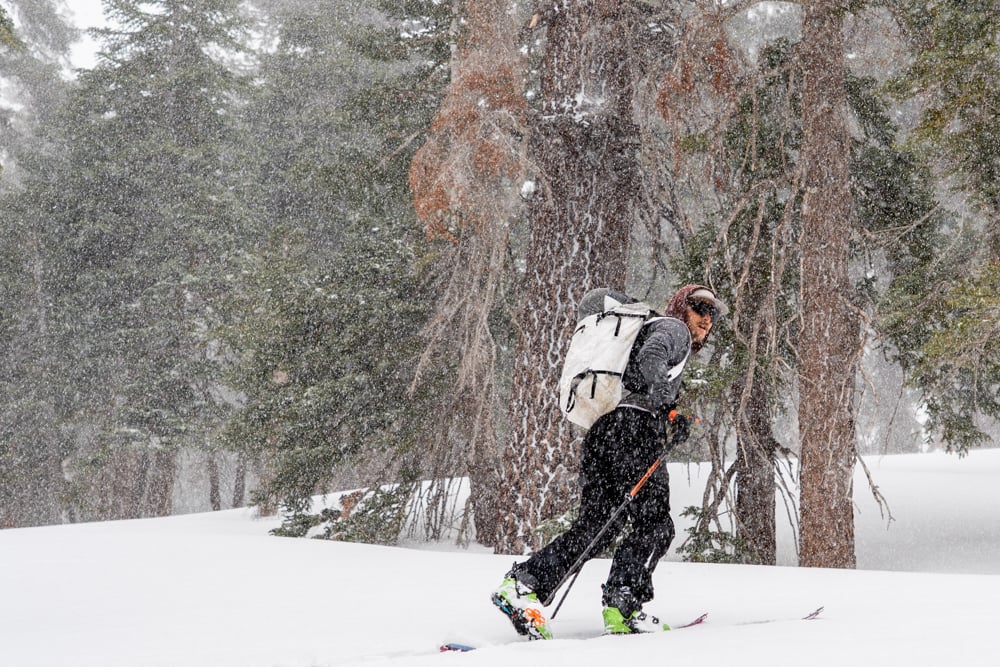
Use
When compared to the Julbo Explorer 2.0, the field of vision and eye protection felt similar; however, the Edge Cover had slightly better peripheral vision for me. There are reasons to suspect that a dedicated glacier glass might be better for prolonged outings at high altitude, but the Edge Cover was plenty dark enough for dawn-to-dusk ski days. The only negative I could find was that the side shields can come off unintentionally, as is the case for some other Julbo glasses, but that only occurred once in my testing. A co-worker personally found them a bit darker than preferred in low light conditions, but I didn’t share that experience, even doing a bit of night skiing with them.

One of my favorite features of the Edge Cover was the fact that the identical lens (0-4 Reactiv High Contrast) is offered in the Edge ski goggles. This meant that I could transition from glasses on the skintrack to goggles on the way down without my eyes having to adjust to the conditions. Maybe I’m a bit of a Julbo fanboy, but it’s hard to deny the perks of good ecosystem integration. That said, the Edge Cover was fine on its own while skiing unless there was fresh snow or precipitation.
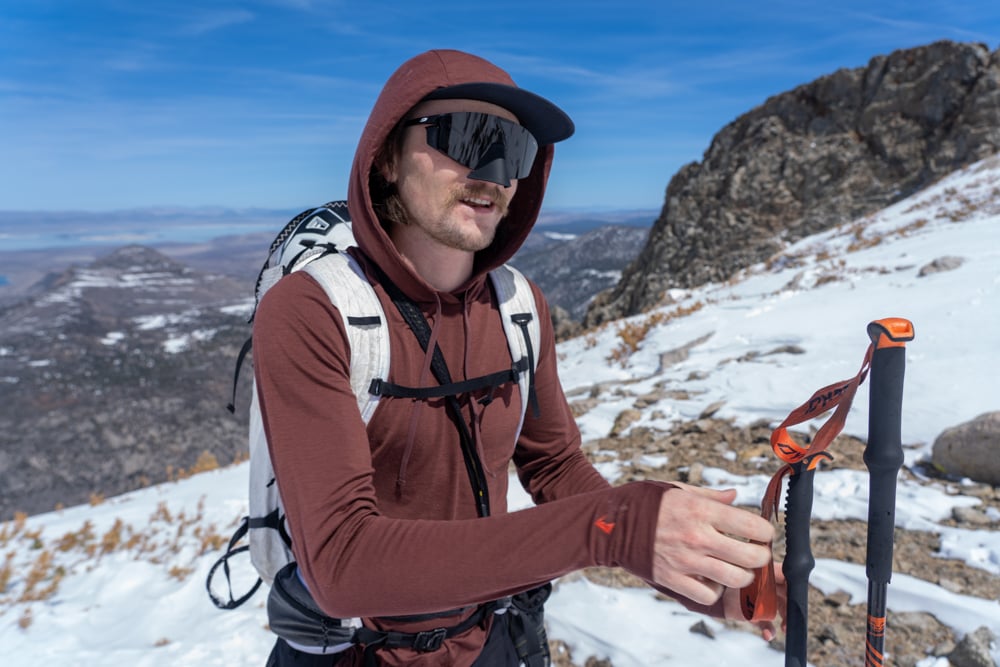

What sets the product apart?
Arguably, the best reason to buy any pair of Julbo glasses is their best-in-class photochromic lenses. There’s no way to say it without sounding like an advertisement, but Julbo’s REACTIV lenses are the best photochromic lenses on the market. They have a wider range of VLT, they transition faster regardless of temperature, they’re more durable, and they will never quit reacting to the conditions.
VLT, or Visible Light Transmission, is how much of the visible light spectrum is left over after light passes through the lens. 100% would be completely clear, and 0% would be completely opaque and resemble black plastic instead of a lens. Clear or low-light lenses typically measure around 80-90% VLT where whereas Category 4 glacier lenses are usually around 5% VLT. Competitors’ photochromic lenses usually cover about 40% of that range, often from 7% to 45%, or 12% to 67%, putting the low end a bit too dark for pre-dawn or storm conditions, and the high end not quite glacier-ready. The 0-4 REACTIV lens from Julbo spans from 4% VLT to 86% VLT, which means you almost never need to take them off. I used the glasses multiple times at night and found that the protection offered at 86% VLT was worth the slight bit of reduced brightness, meaning the 0-4 lens was awesome for night skiing. Furthermore, the Reactiv technology is in the plastic itself, which means it can’t be worn off, and is also why they transition faster and work at any temperature.
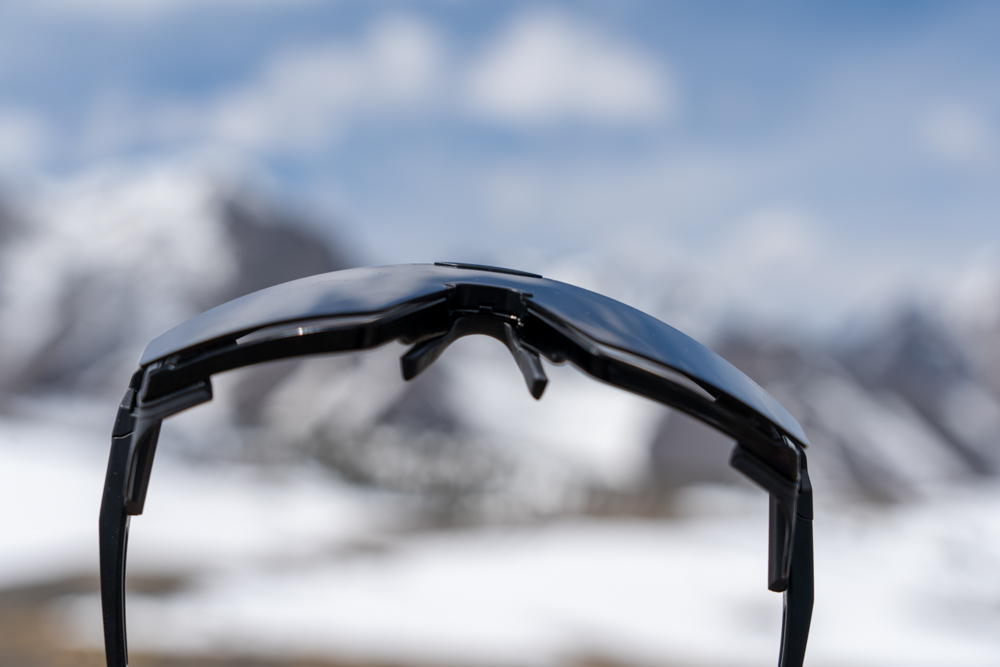
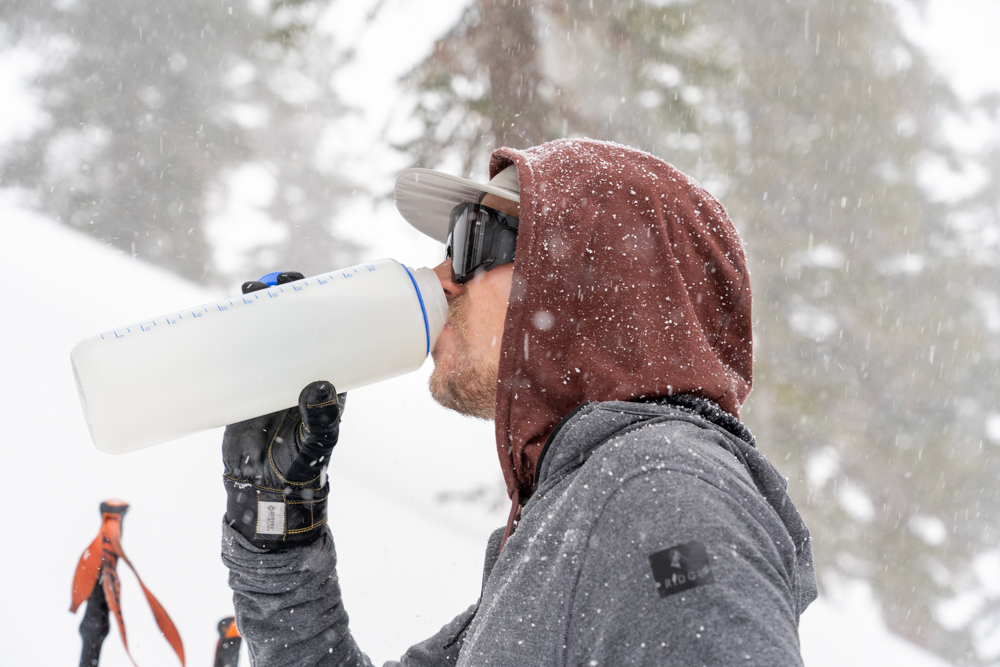
All that makes a big difference in the Edge Cover because it makes them one of the most versatile pairs of glasses on the market, with ideal uses spanning from ski touring, ice climbing, mountain biking, running, climbing, and anything else.
Who is the product for?
The Edge Cover is most worthwhile for those who want one pair of glasses for summer and winter mountain sports.
Friendliness to the Earth
Julbo does not use any third-party environmental certification groups (ie. Bluesign, B Corp…) but does self-report sustainability factors and publishes an annual impact report, which states a significant reduction in emissions within recent years. Where Julbo excels is in repair and longevity. Outside of breaking the frame, almost every part on the Edge Cover, and several other models, is replaceable. On top of that, their lenses are some of the more durable I’ve used, meaning their products stay out of the trash and in our kit.

The Final Word
I’m usually not the one to be all positive about a product, but the Edge Cover paired with a REACTIV lens is outright one of the most versatile pairs of glasses out there, and one of my personal favorites. Whether it’s high-altitude ski mountaineering, mountain biking, casual wear, or just about anything in between. The combination of modularity and protection makes them the glasses I want every day I spend outside.
Shop the Julbo Edge Cover Sunglasses on Outdoor Prolink. Not a member? Apply today!
Read other Julbo reviews
About the Gear Tester
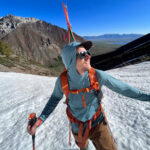
Forrest Smith
Forrest is a long-time gear junkie, with half a decade at Mammoth Mountaineering Supply, a new career as a Mountain Guide, and over a dozen years of backcountry skiing, rock climbing, and backpacking. Forrest is also Dynafits North American “Skimo Hero” competing in skimo race and skiing some of America's steepest descents. Keep up with his adventures on Instagram at @Ski_Smith.






